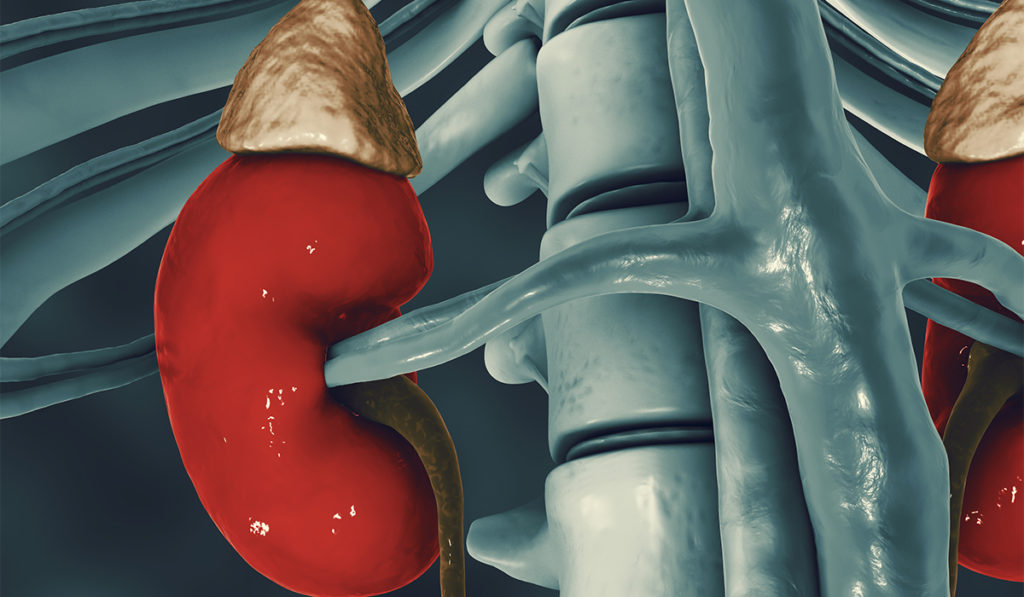The Wnt/β-catenin signaling pathway, long thought to be damaging in the context of chronic kidney disease (CKD), can actually be beneficial when activated in specific cells called the proximal tubules, according to research done at Vanderbilt University Medical Center. The research refines a basic understanding of CKD and offers hope for improved therapies.
Wnt/β-catenin is a signaling pathway that is important for renal development and is less active in the adult kidney until an injury occurs, said Leslie S. Gewin, M.D., a nephrologist at Vanderbilt and one of the researchers whose work appeared in JCI Insight.
“The prevailing paradigm was that Wnt/β-catenin was protective in acute kidney injury, but definitely harmful and profibrotic in the context of chronic kidney disease. We found it was actually a matter of the cell types being targeted that made the difference, and ß-catenin signaling in renal tubules was surprisingly protective in chronic kidney injury.”
“It was actually a matter of the cell types being targeted that made the difference, and ß-catenin signaling in renal tubules was surprisingly protective in chronic kidney injury.”
Focus on Proximal Tubules
Gewin explained the proximal tubules do much of the kidney’s heavy lifting, handling about two-thirds of that organ’s reabsorption of water and solutes. To generate the necessary energy, the tubules have many mitochondria and need high levels of oxygen, leaving them highly vulnerable to injury.
They are an important mediator of CKD progression as the injured proximal tubules produce many proinflammatory and profibrotic cytokines that promote tubulointerstitial fibrosis, or scar formation, Gewin said.
Pathways that Partner to Protect
By stabilizing β-catenin in a transcriptionally active state in murine proximal tubules, Gewin and colleagues found Wnt/β-catenin signaling protected tubules from cell death and improved renal function after injury.
Additional analyses revealed that to exert its beneficial effects, β-catenin had to partner with another transcription factor called FoxO3. Other investigators have shown oxidative stress causes β-catenin to switch transcriptional binding partners from TCF/LEF to FoxO proteins. Gewin generated mice that had active ß-catenin but deleted FoxO3. “If you take out the FoxO3, you lose the protective effect of ß-catenin” she said.
The results confirmed that active β-catenin and FoxO3 act together to alter response to injury, but their downstream transcriptional targets in proximal tubules were still unclear. Gewin’s team used siRNA and RNAseq techniques to uncover targeted genes. Cystathionine gamma-lyase (CSE), an enzyme that has been investigated by others for its renoprotective effects, was identified and validated by Gewin’s team as a target of the ß-catenin/FoxO3 complex. The deletion of CSE in vitro also increased cell death in injured proximal tubules.
Gewin’s team is the first to connect β-catenin and FoxO3 gene regulation to CSE. Together, the experiments reveal a novel, protective pathway in proximal tubules.
Future Directions
A next direction for the research could be to figure out how β-catenin’s partnership with FoxO3 affects proximal tubule cellular responses such as proliferation and de-differentiation, key responses after injury, Gewin said.
Further studies may also test molecular interventions. “There is a well-known inhibitor that can block β-catenin binding to TCF/LEF transcription factors and increase β-catenin/FoxO3 interactions,” Gewin said. “This inhibitor, or novel downstream targets of β-catenin/FoxO3 interactions, may offer new therapeutic strategies for CKD.”
More generally, additional research is needed to understand which CKD patients are likely to develop advanced kidney disease, Gewin said. “Many people with chronic kidney disease progress very slowly, making clinical trials expensive to conduct. Figuring out who is at high risk for quick progression is important to focus clinical trial enrollment on those most likely to have CKD progression.”
“Figuring out who is at high risk for quick progression is important to focus clinical trial enrollment on those most likely to have CKD progression.”





